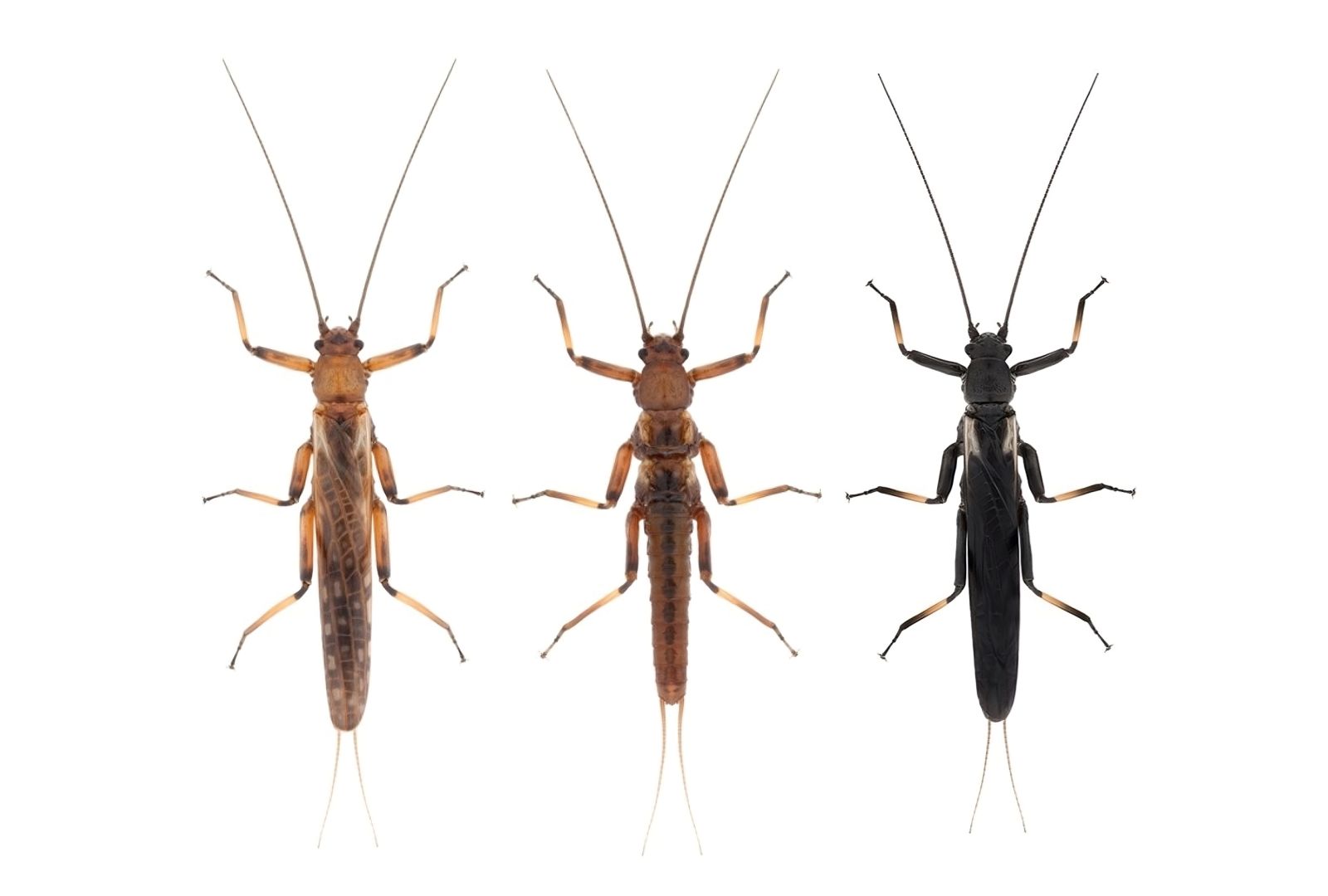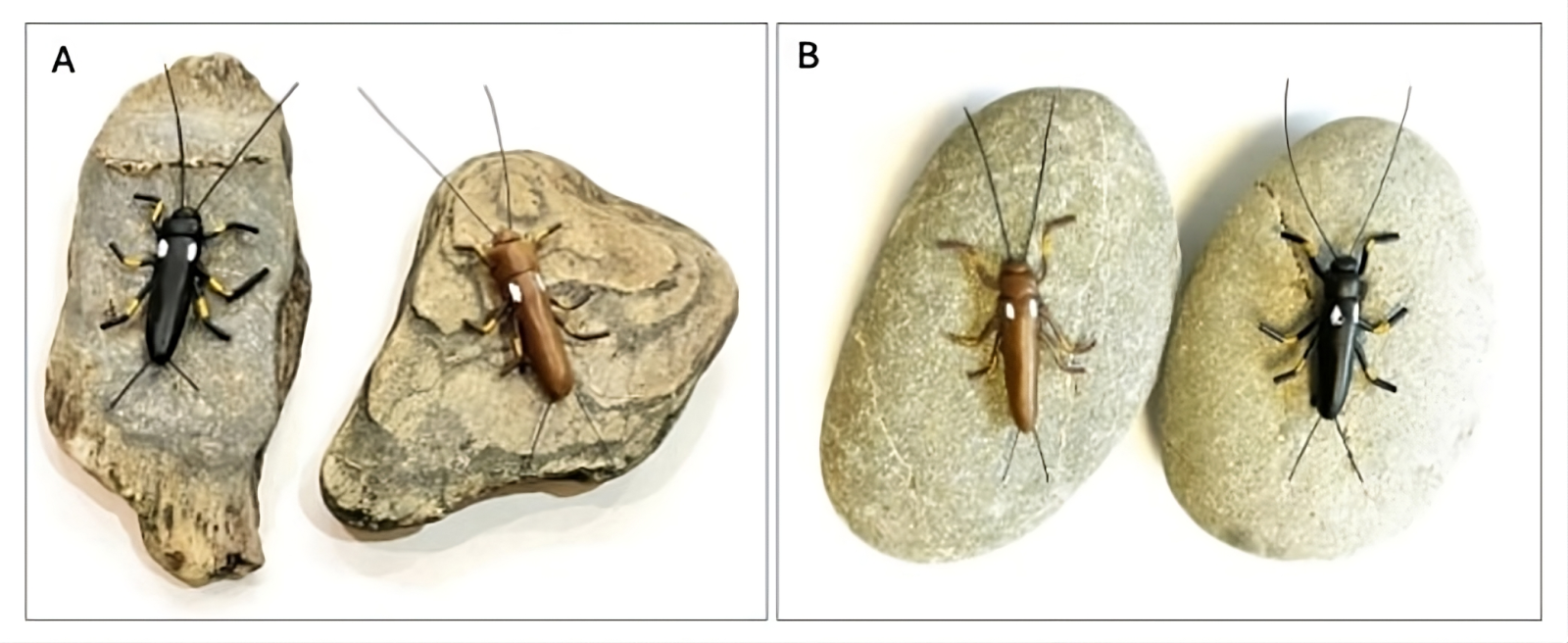Follow us on Google News (click on ☆)

Full-winged (left), vestigial-winged (center), and melanistic (right) ecotypes of Zelandoperla fenestrata.
Image Wikimedia
This phenomenon is not mere biological chance. Researchers describe it as a direct evolutionary response to human-caused habitat changes.
Science reports that the species Zelandoperla mimics, in forest environments, the toxic color of its cousin Austroperla cyrene. This mimicry protects these insects from bird predators by making them appear as a species perceived as toxic.
In deforested areas, this trick is no longer necessary. The toxic species disappear, the predators move away, and the flies abandon their dark coloration.
Extensive genetic analyses have revealed a notable decrease in the frequency of the "ebony" allele among Zelandoperla populations living in deforested regions for several centuries. This allele, responsible for the dark pigmentation, has become rare in these habitats where it is no longer needed for protection against predators.
Producing this coloration requires a significant energy expenditure, which drives populations to favor lighter hues, better suited to new environmental conditions where the selection pressure on color has eased.

Examples of paired black and brown clay models of Zelandoperla (body length ~1 inch) mounted on river stones made of schist (A) and greywacke (B).
Scientists studied more than 1,200 specimens and confirmed these adaptations in 19 different habitats. The results show parallel evolution in isolated populations.
The studies highlight the predictability of evolution in response to similar environmental pressures. This observation raises new questions about the human impact on biodiversity.
What is the "ebony" allele?
The "ebony" allele is a specific genetic variant identified in stoneflies of the genus Zelandoperla. It controls the production of pigments responsible for the dark hue of their exoskeleton.
This coloration plays an important role in forest habitats, where it helps the insects imitate toxic species and camouflage themselves from predators. However, its production is energy-intensive and becomes disadvantageous when predator pressure decreases, as in deforested areas.
Variations in the frequency of this allele illustrate how human-modified environmental conditions directly influence the survival and evolution of a species.